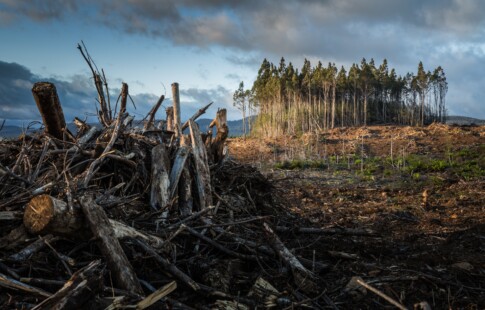
The Plastic Road Concept
We are reader-supported. When you buy through links on our site, we may earn affiliate commission.
In 2017, the Chinese government banned recycling imports. America experienced an overwhelming abundance of municipal solid waste (MSW) following the ban. Corporations are using fewer recycled materials and creating more mining pollution.
Environmental engineers are exploring sustainable solutions to MSW pollution. They are targeting mining waste, recycling limitations and greenhouse gas emissions with the plastic road concept. Construction professionals can install plastic roads from recycled materials to improve global environmental sustainability.
What is the Plastic Road Concept?
Urban regions can shrink their carbon footprints using recycled construction materials. They may convert old plastic components into prefabricated, hollow and modular structures. Plastic roads are significantly more sustainable than asphalt alternatives.
Environmental engineers are increasing the road structure’s stability using crushed stone and sand. They create plastic roads from 100% recycled materials. The material is lighter than conventional asphalt, which minimizes adverse environmental impacts.
Limiting interferences can preserve biodiversity and reduce resource exploitation. Engineers also design the plastic roads with hollow sections to support freshwater conservation. Converting plastic roads into stormwater harvesting systems can preserve the minimal global water supply.
Humanity can only access around 0.5% of Earth’s freshwater. Harvesting rainwater may minimize society’s reliance on limited resources. The plastic road concept also reduces asphalt’s adverse ecological effects.
Asphalt’s Ecological Impacts
Most roads around the world are made of asphalt. The material absorbs and radiates significant quantities of heat. Asphalt is exacerbating some climate change effects and reducing global sustainability.
The construction material contributes to the urban heat island effect. Urban heat islands occur when surface-level emissions react to ultraviolet (UV) radiation and heat. Asphalt increases surface-level temperatures and causes adverse biodiversity impacts.
It also increases heat strokes and other heat-related medical conditions. Asphalt additionally releases emissions over time. The material releases aerosols when interacting with moderate light.
Aerosols pollute the environment and cause atmospheric degradation. Asphalt air pollution contains hydrogen, carbon, nitrogen and sulfur. Individuals can minimize atmospheric degradation by installing plastic roads.
Supporting the Circular Economy
The plastic road concept is more sustainable than conventional road structures because it supports the circular economy. Developing roads from 100% recycled materials reduces natural resource exploitation. The circular economy relies on recycled and recyclable materials to close the production and ecosystem cycle gap.
Environmentalists designed the circular economy to eliminate landfill and mining waste. Using recycled plastic to produce roads decreases MSW and greenhouse gas emissions. The structures improve biodiversity conservation, human health and ecosystems’ stabilities.
Minimizing Microplastic Pollution
Recycling plastic is essential to marine species conservation. Plastics degrade over time in landfills and pollute the ocean through stormwater runoff. Microplastics adversely affect aquatic life when they pollute the water.
Species misidentify the plastics as food and consume them. Consuming microplastics can stunt their growth, reduce their food intake and cause oxidative damage. Microplastics also work their way up the food chain and end up inside humans.
Humans suffer adverse health effects after ingesting plastics. Long-term microplastic exposure can cause oxidative stress, DNA damage and inflammation. Over time, microplastic-related inflammation may cause fatal health conditions.
Creating roads from used plastic reduces microplastic pollution. It also minimizes construction-related waste.
Decreasing Construction Time and Waste
The construction sector is responsible for a significant amount of greenhouse gas emissions and surface-level pollution. Production processes also release particulate matter and volatile organic compounds (VOCs) into the environment. VOCs create smog when exposed to sunlight.
Greenhouse gas emissions and VOCs significantly enhance atmospheric degradation, which causes climate change. The construction industry also releases pollutants into the environment through stormwater runoff. The plastic road concept relies on fewer materials and produces less pollution.
The roads also take less time to produce, which decreases emissions from heavy machinery. Construction professionals can further minimize pollution by creating plastic road components using modular techniques. Modular construction produces less pollution by developing building parts offsite.
Many modular construction facilities contain carbon capturing systems, which filter pollutants out of the air. Construction professionals may shrink plastic roads’ carbon footprints by building them in modules. They can also use the streets to increase global sustainability.
The Multiuse System
Plastic roads are multi-use systems. Individuals can use their hallow chambers as water cable transits. They may connect the cables to rainwater harvesting systems to absorb and store runoff.
The systems can minimize stormwater runoff, which minimizes marine pollution. They may also promote water reuse and decrease freshwater exploitation. Regions can start installing plastic roads to reduce emissions and improve ecosystem conservation.
Installing Plastic Roads
Construction professionals can phase out asphalt roads by repairing damaged areas with plastic materials. In the U.S., the government offers tax incentives for sustainability-enhancement projects. Individuals may rely on the financial benefits to support plastic road installations.
Share on
Like what you read? Join other Environment.co readers!
Get the latest updates on our planet by subscribing to the Environment.co newsletter!
About the author
Steve Russell
Steve is the Managing Editor of Environment.co and regularly contributes articles related to wildlife, biodiversity, and recycling. His passions include wildlife photography and bird watching.





